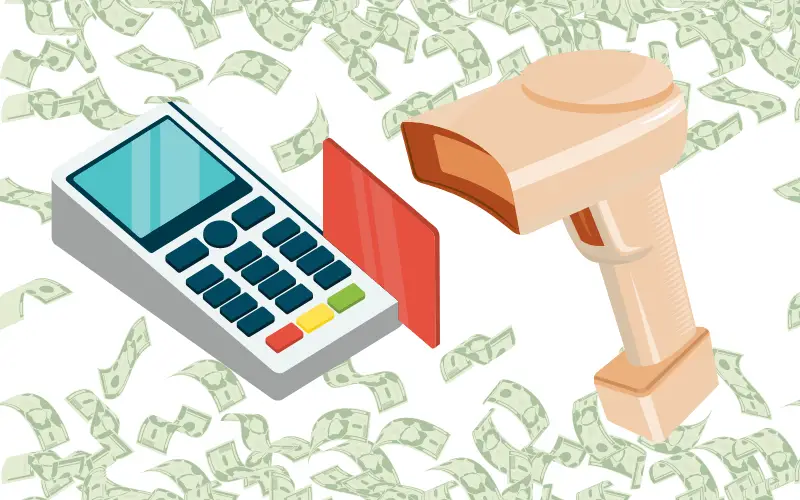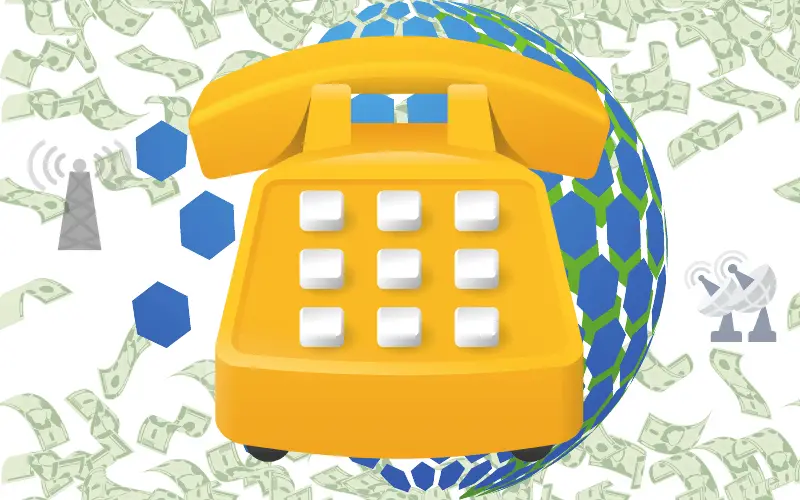
Time and time again, the temptation of money manipulation in large corporations to benefit the top executives has almost become commonplace. It is a sad but true reality rooted in a variety of factors. Sometimes it is out of pure greed. Other times it is a result of needing to stay financially afloat. Whatever the reasons may be, these sorts of scandals have a massive impact on the employees of the company, the larger investing public, and even, the economy overall at times.
At this point in time, we have become so numb to hearing about these scandals, they nearly seem to occur regularly. In fact, they are so common, that many are outright buried by what our attention deems to be, more interesting. While we hear the term “financial scandal” so customarily, many of us are not even quite sure what these words mean. Read on to understand more.
What is a Financial Scandal?
A financial scandal is more accurately called an accounting scandal. These business scandals occur due to the deliberate mishandling of financial statements used by companies to manipulate the financial handlings of these entities. Usually, if not always, these occurrences are spearheaded by the top executives of major corporations. The quintessential wrongdoing will typically involve complicated methods of fund misappropriation. These complex systems are used to mislead shareholders and investors out of truly knowing the value of a company’s expenses, assets, revenue, and liabilities through misused funds.
What are the Two Types of Fraud?
The first type of accounting fraud we will describe is called earnings management fraud. In simple terms, the top executives in companies will misrepresent financial statements as being much higher than they actually are, in reality. This is done to get better or higher loan terms from lending banks, as-well-as to increase the interest of current and potential investors. In other words, the more money a company may seem to earn, the more favorable it will be to the fraud committing entity financially.
The second type of of accounting fraud that occurs is known as employee fraud. This happens when an employee of a company steals the employing company’s money, intellectual property, or actual physical property. These deeds are usually covered up by falsifying inventory records to hide the losses.
What Causes Account Fraud?
Accounting fraud is more of a socially driven incident than an accounting problem. These fraudulent acts can usually go unnoticed for quite some time due to a lack of clarity within financial transactions, that is until an audit occurs as result of revenues not making sense to the bottom line. This creates the perfect scenario for fraud to occur as the systems that are used to account for these matters are insufficient, slow, and lack sufficient detail. While it may seem that fraud may only occur within the top level of management, that is not always the case. In fact many business end up going bankrupt simply due to egregious employee theft. Read on to learn about some of the worst financial scandals in recent U.S. History.
The List of the 15 Worst U.S. Financial Scandals of the Last 15 Years
1. Reliant Energy (2002)
Round Trip Trades

About Reliant Energy
Reliant Energy first opened its doors in 2000, only to be purchased by NRG Energy nine years later. At the time of the buyout, Reliant had become the second-largest electricity provider in Texas, with 1.8 million customers, supplying an astronomical 23 million megawatts of power each year. While the name was kept, the wholesale business was rebranded as RRI Energy, which was eventually retired in 2012 after additional acquisitions by NRG.
The Reliant Energy Scandal of 2002
It is alleged that some Reliant Energy employees schemed to conceal a huge trading loss by turning off four of their five power plants in California in June 2000, causing electricity prices to rise. Taking advantage of the increased hourly prices, they switched some of the plants back on and earned millions in profits for the company, leaving electricity customers to overspend up to $32 million.
The 2002 Reliant Energy Scandal Legal Response
In 2004, a federal grand jury in San Francisco indicted Reliant Energy Services Inc. and four current or former workers for conspiring, defrauding, and manipulating electricity prices amid California’s power debacle approximately four years ago. Government representatives asserted that the Houston-based subsidiary of Reliant Resources Inc. was the first business to incur criminal charges due to the recurrent power outages and drastic cost hikes throughout the western energy market in 2000 and 2001.
The parent company would end up paying $13.8 million to settle a related federal regulatory investigation; they would never admit any wrong doing.
2. Sunbeam (2002)
Overstated Sales and Revenues

About Sunbeam Corporation
Sunbeam Products, a distinguished American brand since 1910, has made a name for itself through its highly sought-after electric home appliances, ranging from the iconic Mixmaster mixer to the Sunbeam CG waffle iron, the Coffeemaster and the groundbreaking automatic T20 toaster. In 1897, John K. Stewart and Thomas J. Clark set up the Chicago Flexible Shaft Company to manufacture machinery for trimming horses and shearing sheep. A decade later, the company rolled out its very first household appliance, the Princess Electric Iron. It was not until 1946 that company would formally changed its name to Sunbeam.
The Sunbeam Corporation Scandal of 2002
The Securities and Exchange Commission would accuse Albert Dunlap, Chairman and CEO of the Sunbeam Corporation, along with the former Chief Financial Officer, Russell Kersh and other parties, of using incorrect accounting practices and concealing non-recurring transactions to deceive the public about Sunbeam’s performance for 1996, 1997 and the first quarter of 1998 – making the financial statements and press releases misguiding and inaccurate.
The 2002 Sunbeam Corporation Scandal Legal Response
Albert Dunlap and Russell Kersh agreed to accept the legal outcomes of the case brought by the Securities and Exchange Commission in the U.S. District Court for the Southern District of Florida. Without denying nor affirming the Commission’s charges, Dunlap and Kersh consented to the court’s judgement: both were perpetually prohibited from breaching the anti-fraud, reporting, record-keeping and internal control laws of the federal securities laws; each of them was permanently prevented from serving as officers or directors of any public firm; and Judge Donald Middlebrooks mandated Dunlap to pay a civil fine of $500,000, and Kersh, $200,000.
Dunlap and Kersh both forked out hefty sums from their own pockets – $15 million and $250,000 respectively – to come to an agreement on a class action lawsuit. During the relevant time frame, neither of them sold Sunbeam stock nor earned bonuses based on performance.
3. Symbol Technologies (2002)
Overstated Sales and Revenues

About Symbol Technologies
In 1973, Jerome Swartz and physicist Shelley A. Harrison co-founded Symbol Technologies, which initially focused on handheld laser bar code scanning devices, catering to the retail industry and providing inventory management services. In order to carry out such activities, which often necessitated scanning items on the spot, a mobile approach was adopted. In September 1988, Symbol invested $120 million in the purchase of MSI Data Corporation, a mobile computer company located in Southern California. Their motivation? Developing and distributing small computers that could collect data remotely, store it, and then upload the information to a host system – revolutionizing inventory counts as we know it.
The Symbol Technologies Scandal of 2002
In 2002, Tomo Razmilovic – the successor of Swartz as CEO in 2000 – unexpectedly left his post amid an inquiry of the Securities and Exchange Commission into Symbol’s bookkeeping. Shortly afterwards, an internal investigation unveiled a massive accounting fraud that had started in 1998 and came to an end in the beginning of 2002. After learning of the situation, Symbol not only cooperated with the SEC investigation, but also with a federal criminal investigation conducted by the U.S. Attorney for the Eastern District of New York. As a result of the probe, Razmilovic and seven other former Symbol execs were indicted in 2004 for engaging in a wide array of fraudulent activities designed to inflate the company’s sales and profits.
The 2002 Symbol Technologies Scandal Legal Response
In late 2002, the SEC sued Razmilovic and ten other former Symbol executives for fraud; as a result, Symbol restated its earnings from 1998 to 2001, eliminating $234 million in revenue and $325 million in net income, while paying a total of $175 million to settle SEC charges and shareholder suits. Four of the former executives even pleaded guilty, while the remaining seven settled with the SEC. Several people who confessed their guilt attested to Razmilovic being the mastermind behind the fraud. Before being indicted, he had already escaped to Sweden, where he holds citizenship. As of now, Razmilovic remains a fugitive and asserts he will not come back to the US to stand trial since he doesn’t think he can receive a fair hearing.
4. Qwest Communications International (2002)
Inflated Revenues

About Qwest Communications International
Founded by Philip Anschutz in 1996, Qwest Communications International, Inc. was a pioneering U.S. telecommunications carrier that broke the mold by creating the Southern Pacific Telecommunications Company and building the first fully digital, fiber-optic infrastructure that ran alongside railroad lines, connecting strategic business hubs with ultra-fast data and T1 services. In 1997, the Southern Pacific Transportation Company and Union Pacific joined forces, offering local service in 14 U.S. states across the West and Midwest. Then, in 2010, CenturyLink made headlines when they declared their intention to purchase Qwest and changed their name to CenturyLink the following year. Not only did they provide voice and digital TV services, but their services also included long-distance and broadband data communications worldwide.
The Qwest Communications International Scandal of 2002
Between 1999 and 2002, Joseph Nacchio, then the CEO of Qwest, recklessly broadcasted unfounded revenue forecasts and induced the company to deceive the public about its financial situation, in an attempt to perform securities fraud. Consequently, Qwest’s stock price, which had once been worth as much as $60 a share, dropped down to just a single dollar. Also part of this series of suspicious transactions were several deals with Enron’s broadband segment, which may have been utilized to hide Enron’s losses.
The 2002 Qwest Communications International Scandal Legal Response
Qwest, a company previously embroiled in accounting scandals, was fined a whopping $250 million by the U.S. Securities and Exchange Commission, split into two $125 million payments due to its poor financial health. Consequently, in 2005, former Chairman and CEO Joseph Nacchio, President and COO Afshin Mohebbi, and seven other Qwest employees were accused of fraud in a civil suit brought forward by the SEC. On April 19, 2007, Joseph Nacchio was found guilty of nineteen counts of illegal insider trading involving Qwest stock; however, eleven years later, US Federal Judge Marcia Krieger granted summary judgement to Afshin Mohebbi, completely overturning the SEC’s accusations.
The Justice Department would return approximately $44 million to victims of the securities fraud scheme.
5. WorldCom (2002)
Fraudulent Expense Capitalization

About WorldCom
In 1983, Murray Waldron, William Rector, and investor Bernard Ebbers – alongside other significant figures – set up the now infamous WorldCom Telecommunications Company. Once the second largest long-distance provider in the US, WorldCom was an American telecom company known for the biggest accounting scandal of its time. After the revelations of cooked books and a subsequent bankruptcy, the company rebranded and its network was sold to Verizon.
The WorldCom Scandal of 2002
In 2002, the WorldCom scandal shook the USA as the second-largest long-distance telephone company at the time was exposed for fraudulent accounting practices. Led by founder and CEO Bernard Ebbers, senior executives at WorldCom had been manipulating earnings from 1999 to 2002 in an attempt to boost the company’s stock price. In June of 2002, a shocking discovery was made; Cynthia Cooper, the Vice President of the company’s internal audit unit, had uncovered a massive fraud with over $3.8 billion of fraudulent balance sheet entries. The fraudulent activity eventually revealed that WorldCom had overstated their assets by an incredible $11 billion, making it the biggest accounting scandal in US history, at that time.
The 2002 WorldCom Scandal Legal Response
In June, when covert executives from WorldCom held meetings with the SEC and the Justice Department, the federal government had already started an unofficial investigation. Then, on June 26, the SEC filed civil fraud charges against WorldCom, supposing they had taken action to control their earnings in order to reach Wall Street’s expectations and maintain the value of their stock. Furthermore, they stated that the plot had been “authorized and guided by senior management”, implying that higher-ranking officials than Sullivan and Myers were aware of the ploy.
A jury would find Bernard Ebbers guilty of fraud, conspiracy, and filing false documents with regulators. He would be sentenced to 25 years in prison, but was released early in December 2019 due to declining health; Ebbers would die no less than two months later.
Read More Fun Facts
Learn more fun facts with Trivia Mastermind content.
6. Peregrine Systems (2002)
Overstated Sales

About Peregrine Systems
In 1981, Peregrine Systems was birthed in Irvine, California, the brainchild of Chris Cole, Gary Story, Ed Beck, Kevin Keyes and Richard Diederich. The enterprise software company sold enterprise asset management, change management, and ITIL-based IT service management software. Some of the more notable software was the Peregrine Network Management System (PNMS) on a Series One computer. This product took the tech world by storm and continued the company down a path of innovation until the MVS client/server solutions for PNMS were released in 1995.
The Peregrine Systems Scandal of 2002
Between 1999 and 2001, Peregrine falsified their financial statements for 11 consecutive quarters to artificially increase their revenue and stock price. The fraudulent behavior was revealed in April 2002. This lead to a restatement of financial results for 2000, 2001, and the first three quarters of 2002, resulting in a total deduction of $509 million from $1.34 billion, with at least $259 million reversed due to the lack of credibility of the transactions.
The 2002 Peregrine Systems Scandal Legal Response
In 2003, the U.S. Securities and Exchange Commission would pursue a civil enforcement and charge Peregrine with massive financial fraud. Peregrine would agree to a partial settlement, without admitting or denying the allegations of the complaint.
After an investigation by the Federal Bureau of Investigation, a federal grand jury would issue a 2004 indictment, convicting eight former executives of Peregrine Systems, Inc. These individuals would be convicted with conspiracy to commit a multibillion-dollar securities fraud. The guilty parties included a former outside auditor of Peregrine, and two outside business partners of Peregrine. Matthew Gless, the former Peregrine CFO, would plead guilty to fraud charges and was sentenced to five years and three months in prison. Stephen Gardner, the former Peregrine CEO, was sentenced to eight years and one month in prison.
7. HealthSouth Corporation (2003)
Overstated Sales and Revenues

About HealthSouth Corporation
In 1984, Richard M. Scrushy founded Amcare, Inc. in Birmingham, Alabama as a Delaware company. Later that same year, they opened their first facilities in Little Rock and Birmingham, and in 1985 the company changed its name to HealthSouth Rehabilitation Corporation. By 1986, they had gone public, listing their IPO on the NASDAQ Stock Exchange under the ticker symbol HSRC. In September 1988, HealthSouth ventured into the New York Stock Exchange and became listed under the symbol HRC. The company would grow to encompass 50 facilities across the U.S. HealthSouth would go on to acquire 28 hospitals and 45 outpatient rehabilitation facilities from National Medical Enterprise, acquire ReLife for $180 million in stock, and also Caremark Orthopedic Services.
The HealthSouth Corporation Scandal of 2003
In late 2002, the SEC charged HealthSouth with a massive accounting scandal – they had allegedly falsely inflated their earnings by an astounding $1.4 billion – after CEO Richard M. Scrushy sold off $75 million in stock days prior to the company’s shocking losses being revealed. In 1996, it is claimed that Scrushy instructed the company’s executives and accountants to alter company reports in a deceitful attempt to meet investor expectations and manipulate the company’s stock price. This scheme went on for seven years, with some fiscal years being overstated by an unbelievable 4700%. The colossal $1.4 billion fraud amounted to over 10% of the company’s total assets, with the company’s taxes, based on the falsified earnings, even surpassing their true income.
The 2003 HealthSouth Corporation Scandal Legal Response
In 1998, HealthSouth was charged with violating the Securities Exchange Act, for keeping negative trends under wraps and presenting distorted financial information. Fast forward to 2003 and the U.S. Securities and Exchange Commission took action against HealthSouth in a corporate accounting scandal. Richard M. Scrushy, the CEO of HealthSouth, was charged with accounting fraud and the SEC began probing if his stock selloff had anything to do with the huge loss reported by an external legal team. On March 18, 2003, FBI agents raided the company’s offices after William Owens, the Chief Financial Officer, failed to make Scrushy admit to fraud in while wearing a recording device.
Scrushy’s would be ousted in 2003 by the board of directors. The board would also allocate $325 million in compensation in relation to purported fraudulence of federal healthcare programs. Nonetheless, Scrushy would be acquitted of 36 counts of accounting fraud against him.
8. Chiquita Brands International (2004)
Illegal Payments

About Chiquita Brands International
Beginning in 1870, Chiquita Brands International would be born when a ships captain Lorenzo Dow Baker purchased 160 bunches of bananas in Jamaica and then quickly resold them in Jersey City eleven days later. Three years later, the Central American railroad developer Minor C. Keith set off to explore banana production in Costa Rica, eventually opting to plant the fruit alongside a railroad track to produce revenue for the railway. Finally, in 1878, Baker and a partner (Andrew Preston) established the Boston Fruit Company. Years later, several fruit exporting ventures operated by Keith joined forces with the Boston Fruit Company to establish the United Fruit Company. Three years later, the company made history when it debuted on the New York Stock Exchange. Chiquita would become the successor to the United Fruit Company through an acquisition.
The Chiquita Brands International Scandal of 2004
Throughout the ’90s and early 2000s, Chiquita Corporation – even after the United States designated AUC, the United Self-Defense Forces of Colombia, as a terrorist organization – continued to pay them, making up a total of $1.7 million in a decade. Ignoring warnings, the company still sent over $300,000 to the paramilitary group, eventually being forced to fess up to their wrong-doings when they voluntarily disclosed the situation to the Department of Justice. From 1989 to 1997, both the Revolutionary Armed Forces of Colombia (FARC) and the National Liberation Army (ELN) – left-wing organizations – received similar payments.
The 2004 Chiquita Brands International Scandal Legal Response
The United States Justice Department would go on to sue Chiquita Brands in 2007, for $25 million as part of a settlement for having ties to Colombian paramilitary groups. In 2016, Judge Kenneth Marra of the Southern District of Florida granted the families of Colombians slain by the outlawed right-wing paramilitary organization the legal right to sue former Chiquita Brand International executives for providing the group with financial support, nine years after the 29th Specialized District Attorney’s Office in Medellín, Colombia subpoenaed the Chiquita board to answer questions about their possible involvement in the conspiracy to commit an aggravated crime and financing illegal armed groups. An agreement between Chiquita and the families of the victims had been reached in 2018.
9. AIG (2004)
Accounting of Structured Financial Deals

About AIG International
AIG was founded in 1919 by American Cornelius Vander Starr. He would launch the renowned American Asiatic Underwriters (AAU) in Shanghai, China, which would later develop into a thriving life insurance operation. By the late 1920s, AAU had extended its reach to Southeast Asia, including the Philippines, Indonesia, and Malaysia. In 1926, Starr would establish the American International Underwriters Corporation (AIU) in New York. Later in the 1930s, AIU ventured into Havana, Cuba and in 1939, Starr moved the headquarters of his global venture to New York City.
Starr would focus on the American market by acquiring Globe & Rutgers Fire Insurance Company, and American Home Fire Assurance Company. By the end of the decade, the general and life insurance organization would expand with agents and offices in over 75 countries, now also including Japan, Germany, France, the UK, and Italy. In 1967, AIG or American International Group, Inc. was incorporated as a unifying organization for almost all of Starr’s insurance businesses and would eventually list its shares on the New York Stock Exchange, in 1984. The company would continue to diversify their products and expand throughout the world.
The AIG Scandal of 2004
In 2005, the Securities and Exchange Commission, U.S. Justice Department and New York State Attorney General’s Office conducted an investigation into AIG for fraud. After external counsels were requested by AIG’s Audit Committee and PricewaterhouseCoopers LLP gave their input, AIG determined it necessary to restate their financial statements from 2000 through 2005.
The 2004 AIG Scandal Legal Response
In November 2004, AIG came to an agreement with the U.S. Securities and Exchange Commission and the Justice Department, reaching a $126 million settlement concerning various regulatory issues, requiring further cooperation with investigators in regard to the sale of a non-conventional insurance product. In February 2005 Greenberg would finally be removed from his position as chairman and chief executive officer as a result of the accounting scandal . The New York Attorney General’s investigation led to a $1.6 billion fine for AIG and criminal charges for some of its executives.
10. Bernard L. Madoff Investment Securities (2008)
Ponzi Scheme

About Bernard L. Madoff Investment Securities LLC
In 1960, Bernie Madoff started his business venture with his high school sweetheart Ruth Alpern, and the help of his father-in-law, Saul Alpern. Madoff’s firm would expand quickly – making markets via the National Quotation Bureau’s Pink Sheets. Madoff Securities had always been determined to keep up with the New York Stock Exchange, so the firm decided to utilize a cutting-edge, computer-based information system to transmit quotes. After a successful trial period, the technology that Madoff Securities had helped to develop ended up becoming the famed NASDAQ. Before long, the firm had achieved its goal and become the largest buying-and-selling market maker at the NASDAQ.
The Bernard L. Madoff Investment Securities LLC Scandal of 2008
In what is now arguably, the most famous accounting scandal in U.S. history, in late 2008, the world was shocked by the Madoff Investment Scandal – a complex and colossal stock and securities fraud uncovered by Bernie Madoff, the former chairman of the NASDAQ and the founder of Bernard L. Madoff Investment Securities LLC. It turned out that Madoff’s wealth management arm was nothing more than a multi-billion-dollar Ponzi scheme.
According to the initial allegations, Bernie Madoff asserted that his enterprise had a total of $50 billion in liabilities. However, prosecutors approximated the magnitude of his scam to be a whopping $64.8 billion based on the money held in the accounts of Madoff’s 4,800 customers as of November 30th, 2008. If you take out the potential profits and taxes incurred from fake gains, about half of Madoff’s primary investors were fortunate enough to avoid losses.
The 2008 Bernard L. Madoff Investment Securities LLC Scandal Legal Response
In 2008, federal authorities apprehended Bernie Madoff, who in 2009 pleaded guilty to 11 federal crimes for operating the biggest private Ponzi scheme on record. On June 29th of the same year, his sentence was 150 years in prison with a restitution of $170 billion, where he ultimately passed away in prison by 2021. His brother Peter would be sentenced to 10 years in prison, and his son Mark would die by suicide two years after his was arrested; both worked for his firm.
Play Trivia!
Challenge yourself and play trivia questions with answers and explanations.
11. Taylor, Bean & Whitaker (2009)
Fraudulent Spending

About Taylor, Bean & Whitaker
Founded in 1982, Taylor, Bean & Whitaker rapidly rose to become one of the top-10 wholesale mortgage lending firms in the United States, claiming the fifth-largest issuer of Government National Mortgage Association securities. Dedicated to “Perfecting the Art of Mortgage Lending”, the company reached an impressive $35 billion in closed residential mortgage loans in 2007 and boasted 2,000 workers. They cemented their place in the market, servicing 500,000 mortgages, including a staggering $51.2 billion of Freddie Mac loans, by 2009.
The Taylor, Bean & Whitaker Scandal of 2009
In 2002, Taylor Bean sparked a fraud scandal when it overdrew its account with Colonial BancGroup by several million dollars – and promised to cover the amount before the day was out through a practice known as “sweeping”. But, when the overdrafts ballooned to a whopping $100 million, Taylor Bean executives went one step further, selling Colonial BancGroup mortgages totaling $1 billion that the company did not actually own. Farkas and his accomplices orchestrated Colonial BancGroup’s filing of severely distorted financial data to the SEC in annual 10-K and quarterly 10-Q forms. This distorted financial data included exaggerations of the value of mortgage loans that had almost no worth.
The 2009 Taylor, Bean & Whitaker Scandal Legal Response
Judge Leonie Brinkema noted a lack of remorse from 58-year-old Farkas and sentenced him to a 30-year federal prison term – in effect, a life sentence. He was granted early release in 2020 after just 9 years served, as a result of the judge’s worries that he could be exposed to the COVID-19 virus in prison. Paul R. Allen, the former Chief Executive and Lead Manager for Ocala Funding, was handed a 40-month jail sentence in 2011 and later released on two years’ supervised release. Desiree Brown, Company Treasurer, pleaded guilty and assisted with the case against Farkas; she received a six-year prison sentence. The other executives were sentenced between three months and eight years.
12. Monsanto (2009 – 2011)
Improper Accounting for Incentive Rebates

About Monsanto
In 1901, John Francis Queeny – a 30-year veteran of the pharmaceutical industry – founded Monsanto in St. Louis, Missouri. The company started off with the production of food additives like saccharin, caffeine and vanillin. In 1919, Monsanto teamed up with Graesser’s Chemical Works and made its way to Europe. They soon expanded into the production of basic industrial chemicals in the 1920s, and that same decade they founded a town called Monsanto in Illinois. From then on, Monsanto went on to create an array of products, from optoelectronics to laundry detergent, and even had a hand in the development of nuclear weapons. Ultimately, they rose to become the world’s foremost conventional seed company, concentrating heavily on agricultural goods and associated products.
The Monsanto Scandal of 2009 – 2011
According to an SEC investigation, from 2009 to 2011, Monsanto’s questionable bookkeeping of incentive rebates caused their reported profit to balloon by $31 million. Losing their Roundup market share to generic producers, they misrepresented their earnings. To amend their mistakes, Monsanto implemented improved internal controls, and two of their top CPAs were suspended while they had to hire an independent ethics/compliance consultant at their own expense for two years.
The 2009 – 2011 Monsanto Scandal Legal Response
The Securities and Exchange Commission would announced that St. Louis-based agribusiness Monsanto Company agreed to pay an $80 million penalty and retain an independent compliance consultant to settle charges that it violated accounting rules and misstated company earnings as it pertained to its flagship product Roundup. Three accounting and sales executives also agreed to pay penalties to settle charges against them.
13. Lehman Brothers (2010)
Failure to Disclose Repo 105 Misclassified Transactions to Investors

About Lehman Brothers
Following the arrival of his brother Emanuel Lehman in 1847 to the U.S., Henry Lehman would establish “H. Lehman and Bro. With the arrival of their youngest brother, Mayer Lehman, in 1850, the firm changed its name again and “Lehman Brothers” was founded. Founded in 1847, Lehman Brothers Inc. was a US-based financial services giant that held an esteemed position amongst the top four investment banks in the country, behind Goldman Sachs, Morgan Stanley, and Merrill Lynch. Before their 2008 bankruptcy, the firm had 25,000 global employees, engaging in activities from investment banking and equity sales, to fixed-income and derivative trading, research, investment management, private equity and private banking. After a long and successful 158-year history, Lehman Brothers ultimately declared bankruptcy.
The Lehman Brothers Scandal of 2010
In March 2010, an examiner appointed by the court reported that Lehman executives engaged in a type of repurchase agreement to make its financial situation appear rosier than it was. This dubious practice was misleadingly described by Lehman as the ‘outright sale of securities’, thereby crafting a materially misleading picture of the firm’s financial standing in 2007 and 2008.
The 2010 Lehman Brothers Scandal Legal Response
Anton R. Valukas, a court-appointed examiner, unveiled the findings of his year-long probe into the fiscal dealings of Lehman Brothers on in 2010. He would reveal that Lehman Brothers had used a questionable accounting practice, known as repo 105, to covertly convert $50 billion of assets into cash just before their financial statements were issued. This could potentially indicate financial malpractice on behalf of Ernst & Young, the bank’s accountancy firm, and might result in criminal prosecution for former CEO Richard S. Fuld, Jr.
The SEC would later announce in 2011 that they lacked confidence in proving that the Lehman Brothers violated US laws in its accounting practices. The administrators of Lehman Brothers Holding Inc. would go on to lose their appeal to overturn a court order In October 2011. The order would force them to pay $206 million into their underfunded pensions plan. Lehman would end up paying more than $105 billion to its unsecured creditors as of January 2016.
14. Autonomy Corporation (2012)
Inflated Valuation

About Autonomy Corporation
In 1996, Autonomy was founded in Cambridge, England, a spin-off from Cambridge Neurodynamics, a firm specializing in computer-based finger print recognition. The team of Michael Lynch, David Tabizel, and Richard Gaunt utilized a fusion of technologies derived from the University of Cambridge and built multiple enterprise search and knowledge management applications based on Bayesian inference and classic approaches. Their enterprising marketing strategies and sales controls solidified their success. Hewlett-Packard (HP) would acquire Autonomy in 2011.
The Autonomy Corporation Scandal of 2012
HP acquired Autonomy in a deal valued at $11.7 billion. This amount was claimed by many to be much too high, at close to 80% over market price. However, just a year later, HP wrote off $8.8 billion of Autonomy’s value, claiming that it was due to sever accounting improprieties and false misrepresentations by the previous management. Mike Lynch, the former CEO of Autonomy, alleged that the problems were actually caused by HP’s mishandling of the company. This would lead to HP stock falling to a decade low in 2012. Major culture clashes between the two companies were cited as the cause of failure by the media.
The 2012 Autonomy Corporation Scandal Legal Response
The Serious Fraud Office (United Kingdom), and the U.S. Securities and Exchange Commission joined forces with the FBI to delve into the potential anomalies, but in January 2015 the SFO eventually closed its inquiry, deeming the probability of success in prosecuting low. Three lawsuits initiated by shareholders ensued, claiming damages due to the decline in HP stock value. In August 2014, a United States district court judge invalidated the agreement which proposed up to $48 million in fees; Autonomy’s former management viewed the settlement as a scheme meant to deflect attention away from HP’s top brass.
In April 2018, Sushovan Hussain, the former CFO of Autonomy, faced charges of accounting fraud in the United States. He would appeal his conviction, resulting in his release on bail, but ultimately, would be unsuccessful by August 2020. Michael Lynch would be charged with fraud in November 2018, based on evidence in Hussain’s case.
In March 2019, HP initiated a landmark civil lawsuit in the UK courts which took a whopping 93 days to be tried and tested. For 22 of those days, Lynch sat in the witness box, making it one of the longest cross-examinations in British legal history. Finally, in January 2022, the High Court in London ruled that HP had won its case against Lynch and Hussain, who had allegedly attempted to falsely raise Autonomy’s reported revenues, revenue growth and gross margins.
15. Wells Fargo (2017)
False Accounting

About Wells Fargo
In 1852, Henry Wells, William G. Fargo, and John Butterfield, established Wells Fargo & Company to provide express and banking services to California, to accommodate the needs of the California Gold Rush. Wells Fargo & Company, a major international financial services provider with corporate HQ in San Francisco, California and operational HQ in Manhattan, has set up managerial offices all over the USA and abroad. This financial giant operates in 35 countries, boasts 70 million customers, and is considered a systemically important financial institution by the Financial Stability Board.
The Wells Fargo Scandal of 2017
In 1981, it was discovered that Lloyd Benjamin “Ben” Lewis, an assistant operations officer at Wells Fargo, had committed one of the greatest acts of embezzlement in history. From 1978-1981, Lewis had forged debit and credit slips to benefit Harold J. Smith and Sam “Sammie” Marshall, the chairman and president of Muhammed Ali Professional Sports, Inc., for which Lewis was also a director. Interestingly, Marshall had formerly worked at the same Wells Fargo branch as Lewis.
The 2017 Wells Fargo Scandal Legal Response
After an investigation, it was discovered that Lewis was paid a staggering sum of $300,000 and would plead guilty to embezzlement and conspiracy charges in 1981. By agreeing to testify against his co-conspirators, Lewis would receive a shortened five-year sentence. Boxer Muhammed Ali was granted a fee for the usage of his name, but had no other involvement in the matter.
Conclusion
As you’ve just read, financial and accounting scandals can come in many forms and a variety of company sizes. While this sort of malfeasance occurs all over the world, the U.S. is no stranger to our own monetary fraud improprieties. Luckily, in many cases, those affected were compensated accordingly, and those guilty parties were tried, fined, and served prison sentences for their actions. Hopefully, these historic wrongdoings will provide current and future business leaders with some very important lessons to learn from; walk the straight line, because fraud affects so many people in horrific ways and eventually, you will get caught.
Read More Fun Facts
Learn more fun facts with Trivia Mastermind content.
Play Trivia!
Challenge yourself and play trivia questions with answers and explanations.



